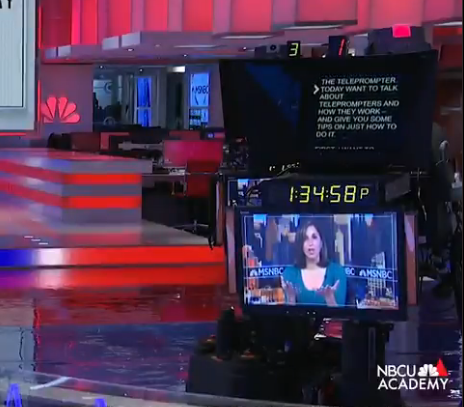NBCU Academy 101
Ever wonder how anchors seem to never break eye contact? They use a teleprompter! MSNBC Anchor Yasmin Vossoughian talks about teleprompters and gives tips for how to give a natural read.

Teleprompters are just another tool in the anchoring toolbox. They help anchors maintain direct eye contact with viewers, drawing them into the show. Teleprompters have small screens that display the script, which is then reflected by a mirror that sits over the lens of the camera. The small screen shows the script but flipped, and when it is bounced off the mirror it is readable to the anchor.
Some teleprompters advance automatically when they register your voice. Other teleprompters advance with the use of a remote control.
Reporters and anchors need to sound more natural when reading the script. Some tips to master delivery and sounding natural include:
- Take your time. Breathe and speak clearly. Keep a good pace, try not to be nervous and talk to the audience like you would talk to a friend. Viewers don’t want to hear you tell them a story like a complete stranger talking a different language.
- Review your scripts. Anchors don’t always write their own scripts, and work with a team of producers and writers. By reviewing scripts, you know what’s coming. Be familiar with what you’re about to say and what you just said. Make sure your script is written in a way that is conversational and matches the way you talk.
- Get pronunciation help. Practice pronunciation of your guests’ names beforehand, but also consider writing names phonetically in the script. That way, when they come up in the prompter, you will read them correctly.
What happens if the teleprompter stops working during the show? Anchors have backup paper scripts in front of them to use if something goes wrong. Some anchors like to have all the script, questions and elements on a paper backup.
Learn more tips about how to read from a teleprompter.



